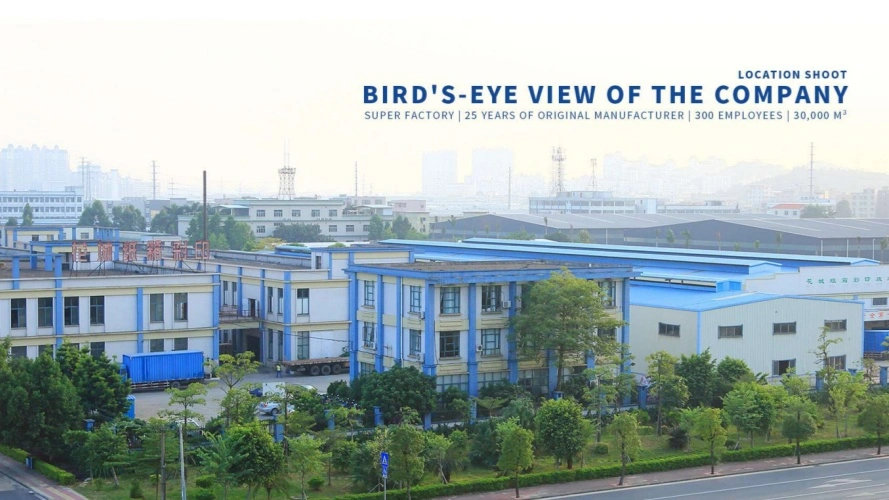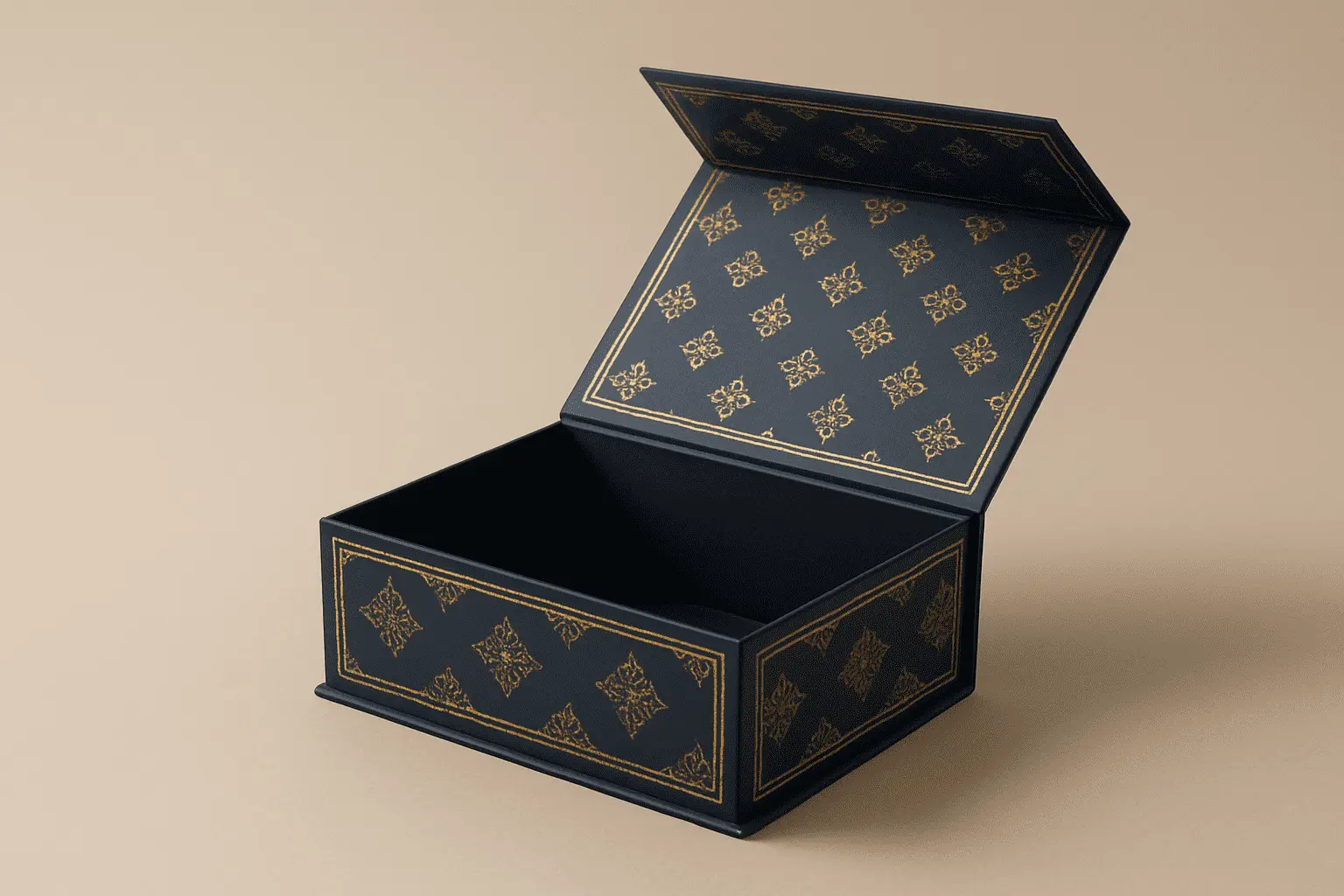When choosing cosmetic packaging, rigid box solutions generally offer superior protection and luxury appeal, while folding cartons provide cost-effective versatility. The optimal choice depends on your brand positioning, product value, target market, and budget considerations. High-end cosmetics brands typically favor rigid boxes for their premium feel and enhanced product protection, whereas mass-market products often utilize folding cartons for their affordability and shipping efficiency. Understanding the distinct advantages of each packaging type helps cosmetic manufacturers make informed decisions that align with their brand strategy and customer expectations. Cosmetic packaging plays a pivotal role in both safeguarding products and establishing a brand's identity. The choice between rigid boxes and folding cartons represents a crucial decision for cosmetic manufacturers and distributors aiming to balance protection, aesthetics, and cost considerations. This comprehensive guide targets B2B procurement managers, OEM clients, and distributors seeking to understand how packaging options impact product presentation, consumer perception, and procurement efficiency. Modern consumers increasingly evaluate cosmetic products based on packaging quality and visual appeal. The unboxing experience has become a critical touchpoint that influences brand perception and customer loyalty. By exploring the strengths and considerations of rigid packaging versus folding cartons, industry professionals can make informed choices that align with market demands and brand positioning strategies.

Understanding Cosmetic Packaging Needs
Cosmetic packaging must meet several core requirements including robust protection to prevent damage, elegant design that conveys luxury, and ample customization opportunities to strengthen branding. Product protection remains paramount, as cosmetic items often contain delicate formulations sensitive to light, moisture, and physical impact. The packaging must maintain product integrity throughout manufacturing, shipping, storage, and retail display. Sustainability has become increasingly important as brands seek eco-conscious solutions without compromising quality. Modern consumers actively choose products with environmentally responsible packaging, driving manufacturers to adopt recyclable materials and sustainable production practices. Packaging also significantly influences consumer perceptions and purchase behavior through tactile feel, visual appeal, and overall presentation. These elements contribute to building brand trust and encouraging repeat purchases, making packaging selection a strategic business decision. Understanding these multifaceted needs helps manufacturers and clients select packaging that preserves product integrity while elevating market appeal and supporting long-term brand objectives.
Rigid Box Packaging — Features and Advantages
Rigid boxes represent premium packaging solutions constructed from heavy-duty materials such as chipboard, combined with specialty laminates for enhanced durability and aesthetics. Their robust structure offers superior protection and creates a luxurious unboxing experience that customers associate with high-quality products. The substantial feel and weight of rigid packaging immediately communicate premium value to consumers. These packaging solutions can be highly customized through advanced printing techniques, embossing, magnetic closures, and bespoke designs, making them ideal for high-end cosmetics. The structural integrity allows for complex design elements including compartments, inserts, and multi-level presentations. Here are the core advantages of rigid box packaging:
- Superior Protection: Multi-layer construction provides excellent resistance to compression, impact, and moisture, ensuring product safety during transportation and storage.
- Luxury Positioning: Premium feel and appearance instantly communicate high value, supporting luxury brand positioning and justifying higher price points.
- Customization Flexibility: Compatible with advanced finishing techniques including hot foil stamping, UV coating, embossing, and specialty textures for unique brand differentiation.
- Reusability Factor: Durable construction encourages customers to repurpose boxes, extending brand exposure and reinforcing premium perception.
These advantages effectively address the needs of cosmetic brands seeking to establish market presence through premium positioning and enhanced customer experience. Popular variations include magnetic closure boxes and sliding drawer-style designs, particularly favored in upscale product lines.
Folding Carton Packaging — Features and Benefits
Folding cartons are lightweight, versatile packaging solutions formed from paperboard, widely adopted for cosmetics due to their cost-effectiveness and production efficiency. Their design flexibility accommodates intricate printing, window cut-outs, inserts, and various coated finishes, making them suitable for a broad spectrum of cosmetic products across different price points. The manufacturing process allows for high-volume production with consistent quality, meeting the demands of mass-market distribution. Folding cartons optimize shipping efficiency through their flat-pack nature and reduced weight, significantly lowering logistics costs. Here are the primary benefits of folding carton packaging:
- Cost Efficiency: Lower material costs and streamlined manufacturing processes make folding cartons ideal for budget-conscious applications and high-volume production runs.
- Design Versatility: Excellent printability supports vibrant graphics, detailed product information, and creative structural designs that capture consumer attention.
- Shipping Optimization: Lightweight construction and flat-pack capability reduce transportation costs and storage requirements throughout the supply chain.
- Environmental Benefits: Typically made from recyclable materials with simpler construction, making them easier to process in recycling facilities.
These characteristics make folding cartons particularly effective for solving cost management challenges while maintaining adequate product protection and brand visibility. While generally less robust than rigid alternatives, proper design and protective inserts can provide suitable protection for many beauty products.
Rigid Box vs Folding Carton — A Detailed Comparison
When comparing rigid boxes and folding cartons, durability and protection often tip the scale in favor of rigid solutions, which better withstand impacts, moisture exposure, and extended shelf life requirements. The multi-layer construction of rigid packaging provides superior barrier properties and structural integrity. Brand positioning represents another major differentiating factor. Rigid boxes signal luxury and exclusivity, supporting premium pricing strategies and high-end market positioning. Conversely, folding cartons often suggest affordability and practicality, aligning with mass-market distribution strategies. Cost analysis reveals folding cartons excel through lower manufacturing expenses, smaller minimum order quantities, and quicker lead times. However, rigid boxes can yield higher return on investment by enhancing brand image and customer loyalty. The premium perception created by rigid packaging often justifies higher product prices and improves profit margins. Environmental impact considerations continue evolving, with both packaging types increasingly manufactured using recyclable and sustainable materials. However, rigid boxes may present recycling challenges due to layered constructions and specialty finishes, requiring careful material selection and supplier partnerships focused on sustainability.
Making the Right Choice for Your Cosmetic Packaging
Selecting optimal packaging involves aligning product type, target market segment, and price tier with appropriate packaging features. Luxury or fragile products often benefit from rigid solutions, while mid- to lower-tier cosmetics may perform well with folding cartons. Product weight, size, and protection requirements directly influence packaging selection. Customization capabilities and supplier reliability are critical factors. Procurement professionals should seek partners offering tailored printing, flexible order quantities, and consistent delivery schedules. Supplier expertise in cosmetic packaging regulations, material innovations, and finishing techniques significantly impacts project success. Market analysis helps illustrate successful applications of each packaging type, providing insight into best practices and consumer expectations. Understanding competitor packaging strategies and industry trends informs decision-making and identifies differentiation opportunities. Effective collaboration with experienced packaging suppliers ensures solutions that meet both aesthetic and functional requirements while supporting business objectives.
FetchingPrinting: Your Trusted Cosmetic Packaging Partner
FetchingPrinting specializes in manufacturing custom rigid boxes and folding cartons designed specifically for the cosmetics industry. With over 20 years of experience and 300+ skilled employees, we deliver premium customization options including high-quality logo printing, embossing, and sustainable material selections that enhance both luxury and mass-market packaging solutions. Our innovative collapsible rigid boxes offer three specialized sizes tailored for cosmetic applications. The Large size accommodates magnetic gift boxes with product heights of 100-150mm, perfect for premium skincare sets. The Medium option suits products with heights of 50-100mm, ideal for foundation and makeup collections. Our Tiny variant handles products with heights of 20-50mm, excellent for lipstick and compact packaging. These patent-protected collapsible designs save over 60% of shipping and storage costs compared to traditional rigid boxes, while maintaining the luxury appeal cosmetic brands require. Our automatic visual positioning production line ensures short production times and stable quality, meeting the demanding schedules of cosmetic product launches. We utilize premium materials including SBS C1S and C2S for superior print quality, CCNB for cost-effective solutions, and metallic substrates for luxury applications. Advanced finishing capabilities encompass hot foil stamping, UV coating, embossing, and specialty textures that create distinctive packaging experiences.
Frequently Asked Questions
Q1: Are rigid boxes more expensive than folding cartons for cosmetic packaging?
A: Generally yes, due to materials and manufacturing complexity, but rigid boxes add significant value through luxury appeal and superior durability which often justifies the higher investment for premium cosmetic brands.
Q2: Can folding cartons provide sufficient protection for delicate cosmetic items?
A: Folding cartons can protect products effectively with proper design and protective inserts, but rigid boxes offer superior protection especially for high-end, fragile, or liquid cosmetic products requiring enhanced security.
Q3: How eco-friendly are rigid boxes compared to folding cartons?
A: Both can be manufactured from recyclable materials; however, rigid boxes often feature additional layers which may complicate recycling processes, making supplier selection and sustainable material choices crucial considerations.
Partner with FetchingPrinting for Premium Cosmetic Packaging Solutions
Ready to elevate your cosmetic packaging with industry-leading rigid box solutions? FetchingPrinting combines decades of manufacturing expertise with cutting-edge technology to deliver packaging that transforms your products into luxury experiences. Our ISO-certified facilities and FSC-compliant materials ensure quality and sustainability meet your brand standards.
Whether you need opulent rigid boxes to position your products in the luxury segment or efficient folding cartons for mass-market distribution, our comprehensive portfolio and client-focused approach ensure your packaging precisely aligns with your brand goals and operational requirements. Our experienced packaging engineers provide end-to-end support from concept development through final delivery.
Contact us at public@fetchingprinting.com for a personalized consultation on cosmetic packaging solutions. As a leading rigid box manufacturer, we offer competitive pricing, innovative designs, and reliable delivery schedules that support your product launch timelines and budget objectives.
Conclusion
The choice between rigid boxes and folding cartons for cosmetic packaging ultimately depends on brand positioning, target market, and budget considerations. Rigid boxes excel in luxury applications where premium perception and superior protection justify higher costs. Folding cartons provide excellent value for mass-market products requiring cost-effective packaging with adequate protection. Both options offer sustainability benefits when manufactured with appropriate materials and processes. Successful packaging selection requires understanding your specific product requirements, market positioning, and customer expectations while partnering with experienced manufacturers who can deliver quality solutions that support your brand objectives.
References
1. Smith, J. (2023). "Sustainable Packaging Solutions in the Global Cosmetics Industry." Journal of Packaging Technology, 45(3), 78-95.
2. Chen, L. & Rodriguez, M. (2022). "Consumer Perception and Purchase Behavior: The Impact of Cosmetic Packaging Design." International Marketing Review, 39(8), 1234-1251.
3. Thompson, K. (2023). "Rigid vs. Flexible Packaging: A Comprehensive Cost-Benefit Analysis for Beauty Brands." Packaging World Magazine, 30(12), 45-52.
4. Williams, A. (2022). "Material Science Innovations in Cosmetic Packaging: Balancing Aesthetics and Sustainability." Materials Engineering Quarterly, 18(4), 203-218.
5. Brown, S. & Davis, R. (2023). "Supply Chain Optimization Through Strategic Packaging Decisions in the Personal Care Industry." Logistics Management Journal, 27(6), 112-127.
6. Martinez, P. (2022). "The Evolution of Luxury Packaging: Consumer Expectations and Brand Differentiation Strategies." Brand Management Today, 15(9), 67-82.


